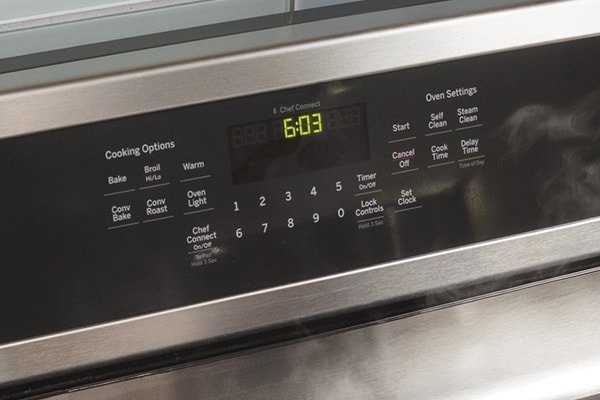
So, what’s this E2 error all about, you might wonder? In simple terms, the E2 error code is often related to a malfunction in your oven’s temperature sensor or thermostat. Imagine it like a thermometer that’s gone wonky. Just as a broken thermometer might give you inaccurate readings of your body temperature, a malfunctioning sensor gives your oven unclear signals about how hot it is. This can lead to cooking mishaps, or even worse, the oven refusing to work altogether. By understanding what causes this error and how you can prevent it, you can ensure that your cooking endeavors remain smooth and stress-free.
Understanding the E2 Error Code
To tackle the E2 error code, it’s important to first understand what happens inside your oven when this code appears. Essentially, this error pops up when there’s an issue with your oven’s temperature sensor or the connection from this sensor to the main control board. Think of it as a breakdown in communication between your oven’s brain and its senses. When this happens, your oven might start heating erratically, which could result in undercooked or overcooked meals—or, in some cases, the oven might refuse to start at all.
Why does this breakdown happen? Often, it’s due to wear and tear. Over time, the wiring connecting the sensor can become loose or corroded, much like how the cord of a well-used pair of headphones might fray and start to cut out. Another reason might be sudden changes in the environment, like a power surge, which can disrupt the sensor’s function. Understanding these causes can help you spot potential issues before they lead to a full breakdown.
So, what can you do if you encounter this error? First, it’s important not to panic. Your oven likely has built-in safety measures to prevent any risk. The best first step is to give your oven some time and then try restarting it. Sometimes, this simple step can reset the system and correct minor glitches. If the error persists, you might need to check the sensor or consult a professional. It’s like realizing your computer is acting up—you wouldn’t want to dive into the hardware immediately; instead, start with a restart and go from there.
Common Causes of the E2 Error Code
Diving deeper into the causes of the E2 error code, several common scenarios lead to this hiccup. Primarily, the temperature sensor, which is like the thermometer of your oven, might be faulty. Over time, exposure to heat and cooking residue can cause this sensor to degrade. Imagine a pair of sunglasses left out in the sun; eventually, the lenses might warp and become less effective at their job. The same happens with your oven’s temperature sensor.
Another frequent culprit is the electrical connection. If the wires connecting the sensor to the oven’s control board become loose or frayed, the signals can get lost in translation. This is akin to having a shaky wifi connection; your device might be unable to receive or send accurate signal information. Electrical interference, such as sudden power surges or fluctuations in your home’s power supply, can also contribute to this issue, causing temporary or even permanent disruptions in the sensor’s function.
So, what’s the consequence of ignoring these causes? Continuously operating an oven with a malfunctioning temperature sensor can lead to uneven cooking, potential safety hazards, and eventually, the need for costly repairs or replacements. It’s like driving a car with a faulty speedometer—without reliable feedback, you risk running into bigger issues. Therefore, it’s crucial to address the root causes as soon as you identify them, ensuring your appliance’s longevity and your peace of mind.
Steps to Prevent the E2 Error Code
Preventing the E2 error code involves a mix of careful maintenance and staying observant about your oven’s behavior. Think of it as nurturing a plant: it requires regular attention to thrive. First, schedule regular checks of your oven’s temperature sensor and wiring. As easy as inspecting your car’s oil level, it can prevent significant issues down the line. Look out for any signs of wear, such as frayed wires or rust on connectors, and address them timely.
Another key preventative measure is maintaining a stable power environment. Consider using a surge protector to shield your appliances from sudden electrical surges, much like an umbrella for your electronics. This simple step can safeguard the delicate electronics within your oven from taking a hit during unexpected power fluctuations.
Lastly, keep your oven clean and well-maintained. Residual food particles and grease can build up over time, causing sensors to malfunction. Just as regular cleaning keeps your home tidy and pleasant, maintaining your oven’s cleanliness can prevent unexpected errors. Regularly wiping down surfaces and running self-cleaning cycles can greatly reduce the risk of running into an E2 error code.
So there you have it—a comprehensive guide to understanding, managing, and preventing the E2 error code on your GE oven or range. By grasping the basics of what causes this error and committing to regular maintenance checks, you can keep your appliance in tip-top shape and your cooking adventures uninterrupted. Think of this as a little bit of self-care for your kitchen technology, much like a regular health check-up for yourself.
If you’ve found that the E2 error still appears despite your best efforts, don’t hesitate to call in a professional. Sometimes, a trained technician is necessary to get to the root of the problem. It’s like ringing in a mechanic for your car; they have the expertise and tools to ensure everything is running smoothly.
Ultimately, the key to avoiding the E2 error in the future is being proactive and attentive. With a little bit of care and timely interventions, you can enjoy the reliability and convenience of your GE oven for many meals to come.